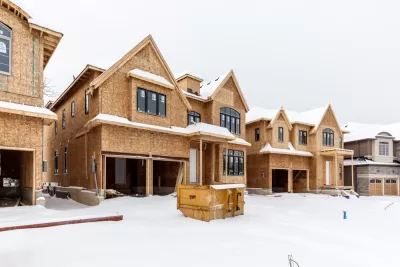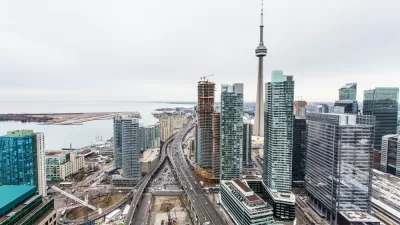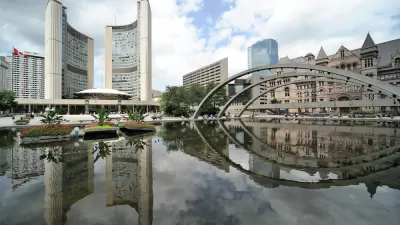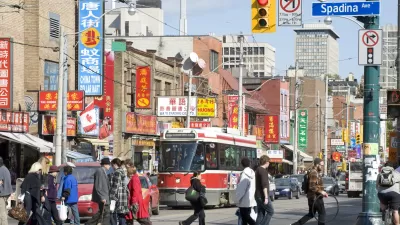Questions about how Toronto will fund Mayor John Tory's ambitious affordable housing plan will be answered by the provincial and national governments.

[Updated December 18, 2019]
Jennifer Pagliaro and Emily Mathieu report from Toronto on the funding necessary to make good on one of Mayor John Tory's signature campaign issues: 40,000 new affordable homes built over the next decade.
A new ten-year housing plan, called the HousingTO 2020-2030 Action Plan, lays out the funding sources for that ambitious target, and the city will rely on outside sources for half the money needed to build all of those affordable houses, according to Pagliaro and Mathieu. In total, the city will need an estimated $23.4 billion to meet those targets.
"But the success of what city staff called an 'aggressive housing agenda' relies heavily on the federal and provincial governments, asking them to put up $14.9 billion over 10 years. The report also fails to outline a funding plan, promising further details through the 2020 budget process," according to the article.
The announcement of the Housing Opportunities Toronto plan comes concurrently with an announcement that Mayor Tory would pursue increased levies on property to help fund affordable housing and transit. As noted in the source article, "the city currently provides land and financial incentives to developers through two housing programs designed under Tory’s administration, Open Door and Housing Now."
[Update: The current name of Toronto's housing plan has been corrected. The current plan is called the "HousingTO 2020-2030 Action Plan." The city's previous ten-year plan was called the "Housing Opportunities Toronto: Affordable Housing Action Plan 2010-2020."]
FULL STORY: City’s new housing plan calls on province, feds to cover half of 40,000 affordable units

Alabama: Trump Terminates Settlements for Black Communities Harmed By Raw Sewage
Trump deemed the landmark civil rights agreement “illegal DEI and environmental justice policy.”

Study: Maui’s Plan to Convert Vacation Rentals to Long-Term Housing Could Cause Nearly $1 Billion Economic Loss
The plan would reduce visitor accommodation by 25% resulting in 1,900 jobs lost.

Why Should We Subsidize Public Transportation?
Many public transit agencies face financial stress due to rising costs, declining fare revenue, and declining subsidies. Transit advocates must provide a strong business case for increasing public transit funding.

Paris Bike Boom Leads to Steep Drop in Air Pollution
The French city’s air quality has improved dramatically in the past 20 years, coinciding with a growth in cycling.

Why Housing Costs More to Build in California Than in Texas
Hard costs like labor and materials combined with ‘soft’ costs such as permitting make building in the San Francisco Bay Area almost three times as costly as in Texas cities.

San Diego County Sees a Rise in Urban Coyotes
San Diego County experiences a rise in urban coyotes, as sightings become prevalent throughout its urban neighbourhoods and surrounding areas.
Urban Design for Planners 1: Software Tools
This six-course series explores essential urban design concepts using open source software and equips planners with the tools they need to participate fully in the urban design process.
Planning for Universal Design
Learn the tools for implementing Universal Design in planning regulations.
Smith Gee Studio
Alamo Area Metropolitan Planning Organization
City of Santa Clarita
Institute for Housing and Urban Development Studies (IHS)
City of Grandview
Harvard GSD Executive Education
Toledo-Lucas County Plan Commissions
Salt Lake City
NYU Wagner Graduate School of Public Service





























